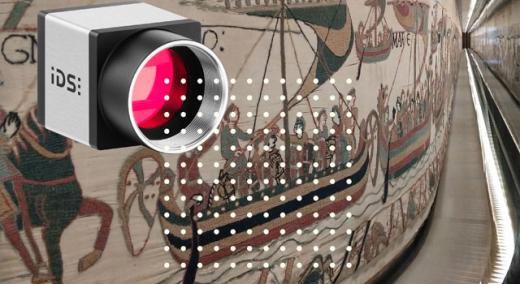Preventive conservation plays an important role in preserving art and cultural assets. To preserve their condition for as long as possible, it’s essential to slow down and evaluate aging processes and other factors that alter materials. To do this, it’s necessary to gain a holistic understanding of the artifact.
|
ADVERTISEMENT |
Cultural heritage science and engineering methods for understanding material behavior require an interdisciplinary approach. Textiles are among the most sensitive art and cultural heritage objects. In the course of their production, handling, presentation, and storage, they are often exposed to influences that can have a damaging effect.
The French startup company S-MA-C-H has studied the Bayeux Tapestry as part of a research project and, with the help of IDS cameras, has developed a system that provides valuable insights for the conservation-optimized storage and presentation of this delicate and extraordinary artifact. The expertise of conservators, combined with state-of-the-art technology, helps to identify potentially damaging factors at an early stage to minimize them or, at best, to exclude them altogether.
…

Add new comment